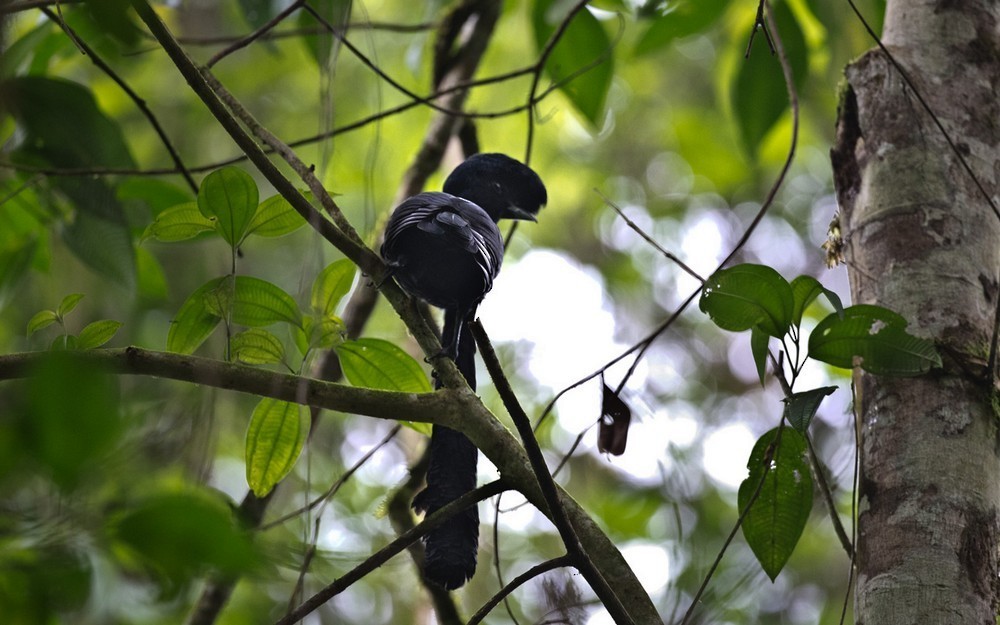Long-wattled Umbrellabird
A species of Umbrellabirds Scientific name : Cephalopterus penduliger Genus : Umbrellabirds
Long-wattled Umbrellabird, A species of Umbrellabirds
Botanical name: Cephalopterus penduliger
Genus: Umbrellabirds
Content
Description General Info
 Photo By Lars Petersson
Photo By Lars Petersson Description
The male is 40–42 cm in height, with the female being slightly smaller at 35–37 cm. Both sexes are short-tailed and carry an erectile head crest; that of the male is slightly longer at 20–30 cm. The male is distinguished by a large throat wattle of feathers, while females and juveniles have no or a much smaller wattle. The length of the wattle can be controlled, and it can be retracted in flight. The male generally has black colored shafts in its feathers. The long-wattled umbrellabird's specific name penduliger derives from Latin "pendulus", hanging, and refers to the wattle. 
Size
36 - 41 cm
Nest Placement
Tree
Feeding Habits
Long-wattled Umbrellabird primarily eats large fruits, especially from Arecaceae, Lauraceae, and Myrtaceae families. It also consumes invertebrates and some small vertebrates, revealing a varied diet and opportunistic feeding behavior.
Habitat
The long-wattled Umbrellabird resides primarily in humid forests, which include areas of secondary growth and regions utilized for traditional farming. The bird prefers environments characterized by high moisture levels that promote a lush, dense canopy, offering ample foraging opportunities and areas for nesting.
Dite type
Frugivorous
General Info
Feeding Habits
Bird food type

Fruit
Distribution Area
The species shows a high level of endemism and is found from the southwestern part of Colombia to the province of El Oro in Ecuador, in the bioregion of Tumbes-Chocó-Magdalena. It inhabits humid montane forests at 1,500-1,800 m above sea level on the ridges and sides of the Andes range. 
Species Status
The species has been classified as Vulnerable by the IUCN. A total population of 6,000-15,000 mature individuals was estimated in 2012. It is thought to be under pressure from habitat destruction through deforestation and from hunting. The easy-to-locate lek mating areas make it particularly susceptible to trapping. The long-wattled umbrellabird is present in several protected areas. It has been suggested that the consolidation of existing scattered reserves, as well as the nomination of several existing protected areas as biosphere reserves, would be very beneficial for the species. The curating of forest composition and reforestation have been pointed out as important approaches. 

 Photo By Lars Petersson
Photo By Lars Petersson Scientific Classification
Phylum
Chordates Class
Birds Order
Perching birds Family
Cotingas Genus
Umbrellabirds Species
Long-wattled Umbrellabird